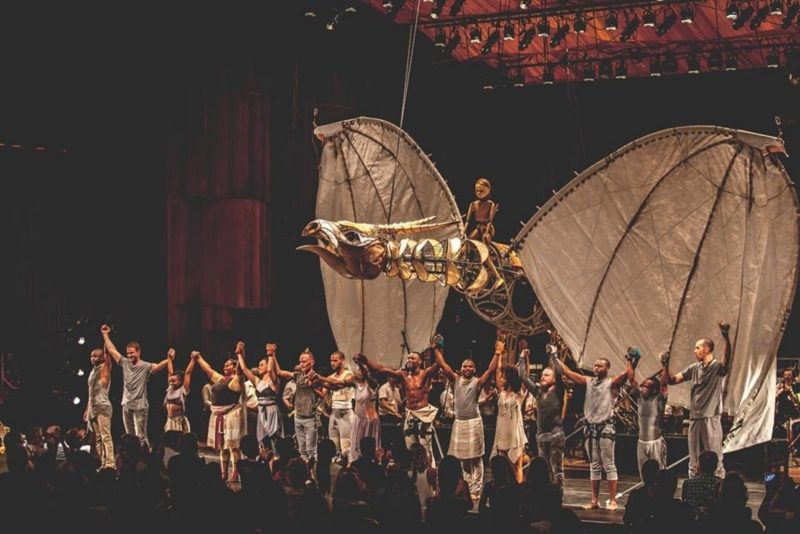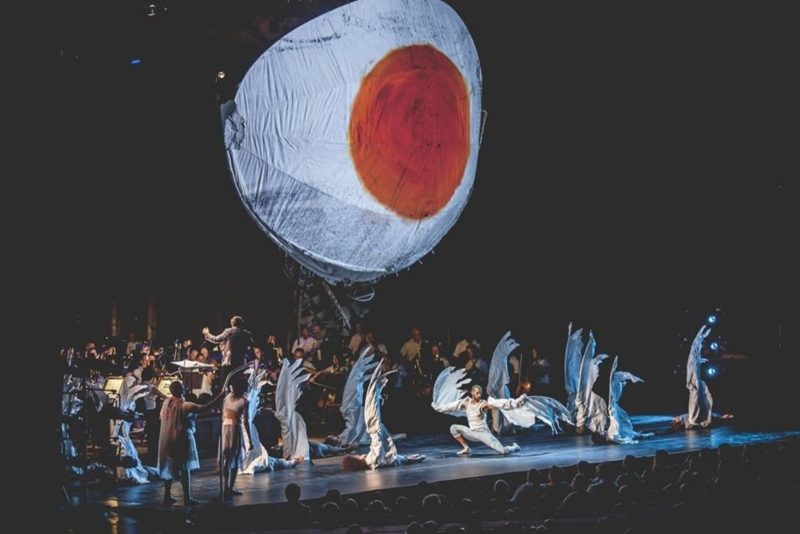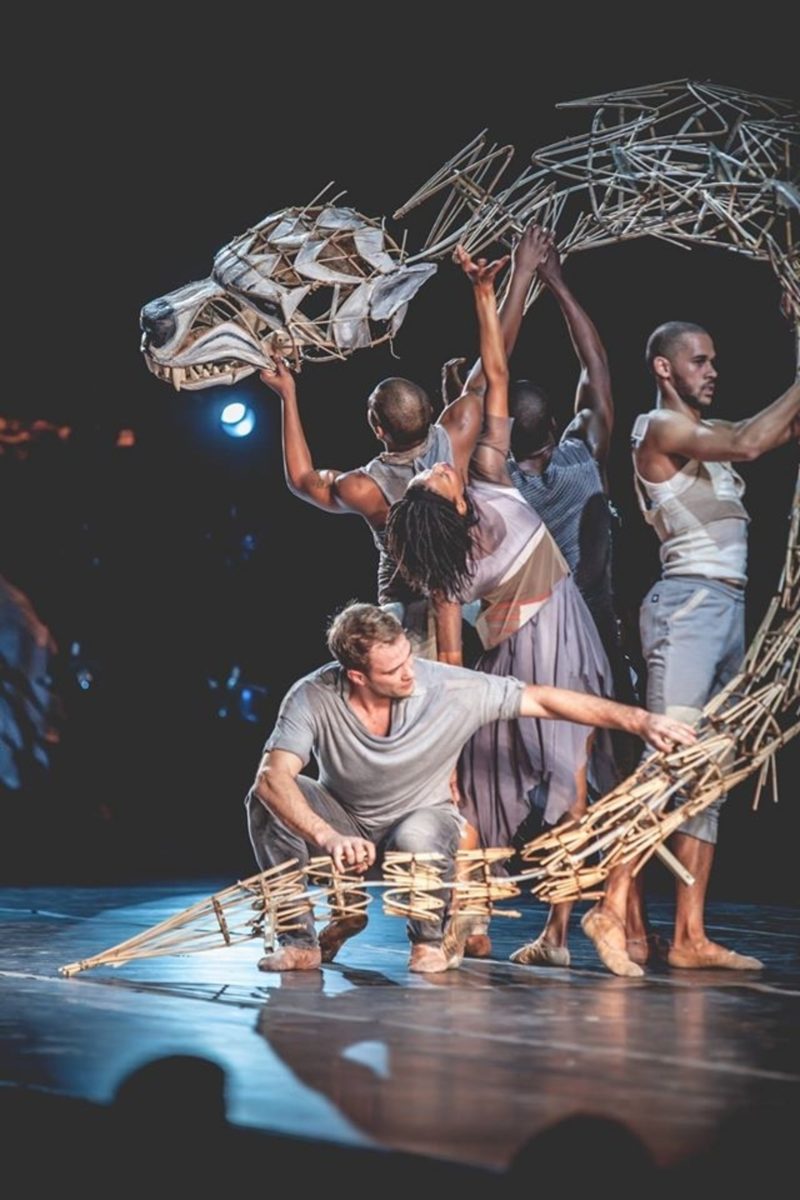The power of love, the victory of the forces of good over evil, the journey towards freedom, and mystical enchantment: sounds like a fairy tale, right? It certainly has the make up of a warm and fuzzy bedtime story, but these are the themes behind the North American premiere of “Firebird: Reimagined” with the Philadelphia Orchestra at the Mann Center for the Performing Arts on July 20.

This performance is part of Firebird: Spirit Rising, an intensive five-month festival dedicated to looking at Stravinsky’s masterwork from varying artistic perspectives. Other participating cultural organizations across the city include the Free Library of Philadelphia, the Rosenbach Museum and Library, and the Philadelphia Zoo. Curated by Nolan Williams, Jr., the festival seeks to bring a multicultural perspective to a classic Russian fairy tale, reimagining its themes of love, loss, and sacrifice for a diverse 21st-century audience.
The first half of the program began a conversation between Russian and South African folk traditions with the Grammy-award winning a capella group, Ladysmith Black Mambazo. The group gained prominence when Paul Simon heard their voices in his visit to South Africa. From that point on, Simon championed the group and helped them bring their music to America and beyond. The performers combined singing with rhythmic clapping and choreographed movement, moving closer and farther from the microphones to vary the impact the volume plays in their singing. They performed music that mirrored the messages behind “Firebird”–hope for the future tinged with longing, loss, and sadness. A song called “Thalaza” stood out with the harmonies of the singers’ voices swelling as they expressed “I miss the place I was born.”
Near the end of the first half, we were introduced to “The Larch Tree” and “The Vain Suitor,” two Russian folk songs that the composer of “Firebird,” Igor Stravinsky (d. 1971), wove into the ballet’s musical structure. The Mann Center commissioned Nolan Williams, Jr., to arrange the songs for two Philadelphia based vocalists, the classically trained Andrew Lawson and the neo-soul influenced Zeek. The choice of these two vocalists was evidence of the festival’s enthusiasm to showcase Philly talent and integrate it into the performance.

Williams explained that “The Larch Tree” was about a couple who fall in love under a tree. After spending a blissful day together, the woman suddenly falls ill and dies–interestingly enough, the dance continues after her death. “The Vain Suitor,” on the other hand, is about a young man trying to win the affections of a young woman with the ultimate goal of controlling her. The two performances allowed us to hear the unusual combination of Russian and South African folk songs from a different, American vocal sensibility. Zeek’s voice had a smooth and controlled falsetto in the vein of John Legend. Unfortunately, Lawson’s microphone wasn’t working for much of the song and even he couldn’t quite project to overcompensate as a result of the circumstance. In addition, Williams completely blanked out on Zeek’s name when introducing him (oops!).
The second half of the program was what drew many of the audience to the Mann Center in the first place–the ballet itself. Stravinsky’s “Firebird” has held significance for me since I was a child as the 1919 concert suite version was strikingly featured in Walt Disney Pictures’ “Fantasia 2000.” In the animated interpretation of the ballet, a Sprite (drawn from Greek mythology) unintentionally provokes the Firebird and as a result the forest is burned down. The Sprite is then inspired to heal the forest from the damage left by the enraged Firebird. In many ways, this was Disney’s stance on the importance of protecting our rainforests. “Firebird” was the closing piece in “Fantasia 2000,” and it was ultimately chosen as it was deemed to be intensely resonant as Mussorgsky’s “Night on Bald Mountain” and Schubert’s “Ave Maria” were in the conclusion of the original 1940 film.
Stravinsky originally wrote the music in 1910 for the experimental ballet troupe, Serge Diaghilev’s Ballets Russes, and the ballet was later reimagined by legendary choreographer George Balanchine in 1949. This is an impossibly large shadow and Williams made a clear decision to part ways with the already successful tradition and try something untested.
The story from the original ballet is still mostly in tact, but the characters have been altered. The original Prince Ivan character has been transformed into the Seeker, a young woman on an identity search (performed by Jackie Manyaapelo). By her loyal side is the Alchemist of Honesty, the ever-knowledgeable one (performed by Ntombi Gasa). The Firebird herself transforms from birdlike puppets and paper fragments (performed by Shaun Oelf). The princesses in the land imprisoned by the wicked magician Kostchei have been transformed into puppets of children. The evil Kostchei is signified by the snake, dog and beast (performed by Nkanyiso Kunene). At long last, a new character is forged from the conflict between the Firebird and Kostchei.

Throughout the ballet, newly choreographed by Jay Pather, the dancers onstage had various objects attached to their bodies–white wings, giant leaves, puppets (puppetry designed by director Janni Younge), and an artfully crafted head of a bird. There was an enormous egg shaped monitor that lighted up with poignant images designed by animator Michael Clark, evoking specific emotions within the story. By the time the final musical theme emerged, the Firebird had been hatched from its egg and one of the puppets rode on its wing (into the sunset, so to speak).
When experiencing this incarnation of “Firebird,” I couldn’t help but be immersed in all that’s going on in the storytelling. At times for a split second, I stopped noticing that the reliably superb Philadelphia Orchestra (led by conductor-in-residence Cristian Macelaru) was playing right behind the elaborate action. The orchestra was the glue that held all of the pieces together, especially in moments when the choreography and multimedia aspects didn’t always paint the clearest picture for the audience to follow along. All of the competing art forms forced me to choose which aspect of the piece to focus on and then after a while, switch over to the next aspect that caught the eye or ear.
When looking over the crop of performances at the Mann Center every year, it tends to be overflowing with populist material aimed at a general audience. This performance was still a crowd-pleaser but with a degree of originality for viewers who are looking for something off the beaten path.
Whether or not you could completely identify with all of the reinterpreted action on stage, it managed to expose younger audiences (the Philadelphia Inquirer’s Peter Dobrin noted that this performance drew nearly 4,400 patrons) to a great piece of music they may never have listened to in depth–with the added gift of the Philadelphia Orchestra performing at the highest degree of their skill.
For more information about the Firebird: Spirit Rising, check out the festival’s website.









